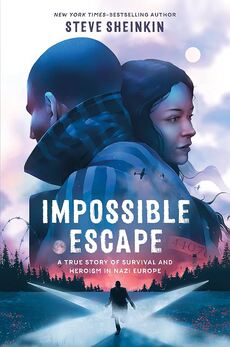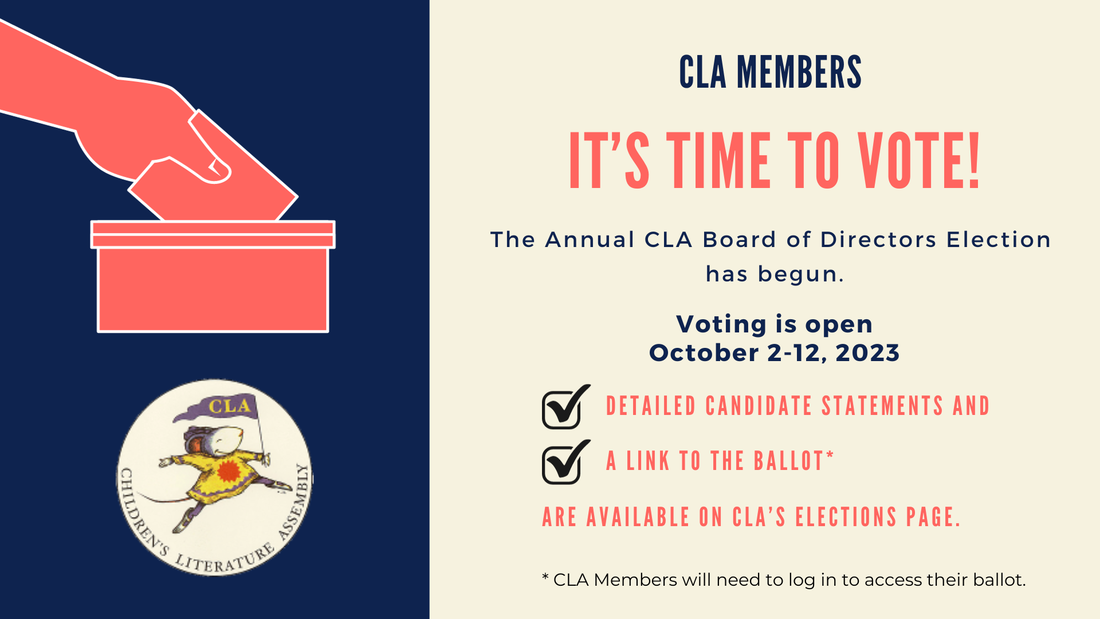Interrogating History, Perspective, and Nonfiction Writing with Steve Sheinkin’s "Impossible Escape"10/10/2023
By Mary Ann Cappiello & Xenia Hadjioannou on behalf of the Biography Clearinghouse  Recently, the Biography Clearinghouse interviewed author Steve Sheinkin about his latest nonfiction book, Impossible Escape: A True Story of Survival and Heroism in Nazi Europe. Action-packed and filled with dramatic tension and intricate historical details, Sheinkin shares the experiences of Rudi Vrba and Greta Sidonová, two Jewish teenagers during World War II. While the full video interview and transcript are available on our website, covering a range of questions regarding Sheinkin’s research and writing processes, we share an edited portion of it here on the CLA blog as an example of the complex decision-making that goes into writing narrative nonfiction for tween and teen readers. Interview Question As you were working on the book and revising it, how did you balance crafting a narrative that builds tension, which as you mentioned earlier, gets the reader hooked and builds the narrative towards that climactic moment, and the need for exposition, which is oftentimes in the case of this book exposition about very difficult topics? What were the moments where you knew that you had to interrupt the action, pause the action to provide that information for your readers? Steve Sheinkin’s Answer (edited for brevity): That’s doing narrative nonfiction for middle grade and YA, I think. That's my career essentially, trying to figure out how to do that…… I used to write textbooks. That's… you see how hesitant I was to confess that? But I used to write history textbooks where they don't have that problem. It's all just boring facts and figures and names and dates. And so I just don't want to ever do that. I'm still sorry and making amends for doing that. So I want it to be just story. And then I realize, wait a minute. I can’t be. I get jealous of people who write for adults because they could just say, “and then Pearl Harbor happened,” and then everyone knows what that means. I can't do that, and fair enough I shouldn't be able to, because it's unfair of me to assume that someone who's 12 or 14 has that background information, and they shouldn't have to, to pick up the book. I think that's part of what makes this, hopefully, makes one of my books valuable, is that they don't have to have background information…. I guess I hope it works that I start with just story…I am seeing all the best scenes where there's really well documented moments that have those elements of a scene that you want as a writer. .. You don't need to know them right away, but you do need to know them pretty early on, and that's why the first third of a book like this is always the hardest part. It’s kind of like a juggling act once the balls are going. It's okay. But getting them all in the air in the right order is the hard part. And so I'll write little bits of context. In this case the rise of Adolf Hitler, what the Nazis were doing. How anti-semitism was such, so central, to what the Nazis did, and and all of that… I end up writing way too much of that, and I always do, and then kind of pare it down until it starts to feel right, and I work with my editor on that kind of stuff more than any other part of the book. I don't like to write the whole thing and then send it to her. I specifically like to try to write that first third as a draft and send it to her because it's just never, never good at first. It always has that problem of being clunky, and either not starting fast enough or we're not getting to the context soon enough, and those are kind of at odds with each other. You can get it right with enough back and forth, and trial and error… It's kind of like making a movie. You film both. You film all the scenes. You don't have to decide right away what order you're gonna edit them together in, but you know they're all going to be there.
Punctuating Narrative with Exposition
Embracing Point of View in Nonfiction Writing
Mary Ann Cappiello teaches courses in children’s literature and literacy methods at Lesley University and is a founding member of The Biography Clearinghouse. She is co-chair of CLA's Expert Class committee and a former chair of NCTE’s Orbis Pictus Award for Outstanding Nonfiction K-8. Xenia Hadjioannou is associate professor of language and literacy education at the Berks campus of Penn State University. She is president of CLA and co-editor of the CLA Blog. She is a founding member of The Biography Clearinghouse. |
Authors:
|
CLA
About CLA
|
Journal of Children's Literature
Write for JCL
|
ResourcesCLA-sponsored NCTE Position Statements
|
Members-Only Content
CLA Video Library
|
© COPYRIGHT 2018.
ALL RIGHTS RESERVED |



 RSS Feed
RSS Feed